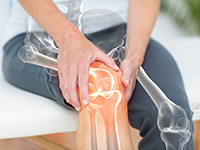 UAB Department of Orthopaedic Surgery faculty, staff, and trainees continue to make strides for medical advancement through basic and clinical research. We look forward to promoting and sharing their elite medical research and discoveries that will continue to improve patient outcomes.
UAB Department of Orthopaedic Surgery faculty, staff, and trainees continue to make strides for medical advancement through basic and clinical research. We look forward to promoting and sharing their elite medical research and discoveries that will continue to improve patient outcomes.
Investigating spinal trauma
John D. Sherrill Chair of Orthopaedic Surgery and Professor Steven Theiss, M.D., alongside his colleagues: Andrew McGee, M.D., Eli Levitt, M.S., John Prather, M.D., Doug Crowther, M.D., and Gerald McGwin, M.S., Ph.D., published “Association of Mortality and Charlson Comorbidity Index in Surgical Spinal Trauma Patients at a Level I Academic Center” in the National Library of Medicine.
The purpose of this research is to evaluate the existence of CCI involving morality rates undergoing surgical intervention. According to researchers, CCI refers to the Charlson Comorbidity Index Score, which lists the presence of comorbidities with various weights for a total score to estimate mortality within one year of hospital admission.
Researchers found the highest proportion of one-year mortality involved patients with cervical and thoracolumbar injuries. Researchers concluded that Charlson Comorbidity Index Score was associated with a higher proportion of deaths at 30 days, 90 days, and one year.
Improving bone heath
Former UAB Orthopaedic Surgery Research Fellow Eli Levitt, M.S., in company with his colleagues: David Patch, M.D., Brent Ponce, M.D., Afshin Razi, M.D., Stephen Kates, M.D., and Joshua Patt, M.D., MPH, published “Barriers and Resources to Optimize Bone Health in Orthopaedic Education” in The Journal of Bone and Joint Surgery.
The mission of this research is to assess the latest state and viewpoint of bone health education from the perspective of orthopaedic residency program directors. Therefore, a self-generated 29 question online survey was sent to 129 program directors in the U.S. to assess bone health education. Researchers state that the data collection was performed anonymously with a 47 percent response rate.
Because of the low response rate from the resident population with 66 responses, no conclusions could be drawn. Researchers conclude that their discoveries provide an assessment of bone health education in the United States to guide improvement in the orthopaedic curriculum.
Vascular injuries and fractures
Clinical Research Director Associate Professor Clay Spitler, M.D., collaborated with his peers: David Patch, M.D., Graeme McFarland, M.D., and Walt Smith, M.D., published “Assessment and Interventions for Vascular Injuries Associated with Fractures” in the National Library of Medicine.
The objective of this research is to highlight the importance of assessment and surgical interventions involving both vascular and orthopaedic trauma. Researchers found the importance of surgical intervention within six to eight hours after the event because delay in arterial continuity greater than eight hours is associated with an amputation rate as high as 86 percent.
Researchers also stated that the Lower Extremity Assessment Project study showed that prolonged ischemia time after popliteus artery injury and knee dislocation was the primary factor determining the need for amputation.
Ultimately, researchers concluded that the likelihood of amputation in combined orthopaedic and vascular injuries varies widely and is influenced by factors such as greater than eight hours to repair, arterial transection, extent of soft-tissue damage, associated peripheral nerve injury, and presence of compartment syndrome
UAB Department of Orthopaedic surgery faculty, staff, and trainees take great pride in medical research, patient care, and education. With this continuous medical research and development, the department looks forward to continuing to serve its clinical and research missions, improving patient care across the nation.
Disparities in compensation
Collaborating with colleagues across UAB as well as at New York University and the Hughston Clinic, Department of Orthopaedic Surgery faculty and trainees published “Disparities Among Industry’s Highly Compensated Orthopaedic Surgeons” in the Journal of Bone and Joint Surgery.
Authors note that the purpose of their research was to assess possible relationships between industry payments and orthopaedic surgeon gender, subspecialty training, and practice settings.
The team utilized a publicly-available website developed in conjunction with the U.S. Affordable Care Act that sheds light on payments from industry to physicians with the goal of increasing transparency. They used retrospective analysis as well as statistical analyses to investigate the factors that contribute to payment differences across orthopaedic surgeons.
Authors found that orthopaedic surgeons in the subspecialties of spine (32.9 percent), adult reconstruction (27.9 percent), and sports medicine (14.5 percent) made up a majority of the 25 highest earners. They also note that orthopaedic surgeons who subspecialize in sports medicine had significantly higher total mean payment amounts when compared with all other specialties.
While this study focused on compensation in relation to specialty, authors note that additional studies are warranted to evaluate the disparities between men and women and encourage policies to promote gender equality.
Study authors at UAB included:
- Sudarsan Murali, MBA
- Kyle D. Paul, BS
- Alexander M. Kofskey, BS
- Anthony L. Wilson, MS
- Adam M. Almaguer, MD
- Bradley W. Wills, MD
- Gerald McGwin, Ph.D.
- Amit M. Momaya, M.D.
- Eugene W. Brabston, M.D.
To read the full study and its methods, click here.